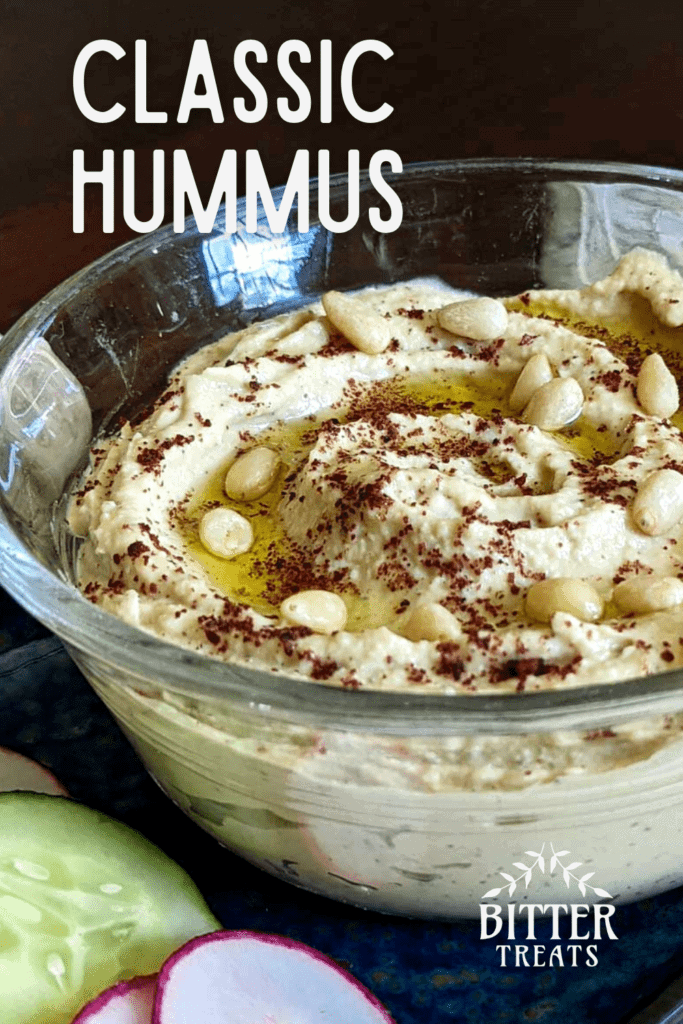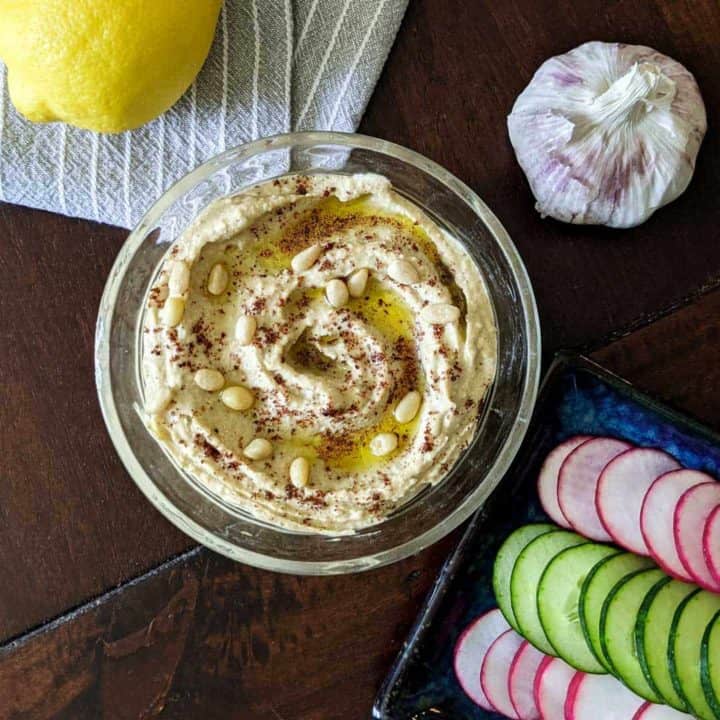In my house, we always have a jar of homemade hummus on hand. In fact, I can’t remember the last time I bought it at the supermarket. It’s a staple; we have it with breakfast, lunch, and dinner. It’s always on the table when we host dinner parties, and we almost always take a jar with us when we travel.
It’s not my doing: my partner, Jacob, is the hummus-maker in the relationship, and he has perfected his art. Every time we host a dinner party or have houseguests, someone inevitably asks him for the recipe — and they are always disappointed, because he does not have one. Might as well ask Monet how to paint a water lily.
Until now.
This one’s for every disappointed friend and family member. I have stood and looked over his shoulder, guesstimating measurements and taking notes. I have tested those notes for accuracy. This is it, friends: the recipe for perfect, classic, homemade hummus.

Tips for making the perfect homemade hummus
Before I lived with a hummus artist, I used to make it myself. So, I’ve tried a lot of tips and tricks over the years. And after decades of hummus experimentation and observation, here is what I have learned: you do not have to peel your chickpeas. Unless you really want to.
In fact, it is my conclusion that there are just two keys to great hummus.
The first is simply making sure you blend it long enough. That’s because if you just give it a quick zip in the food processor, you’ll get a gritty texture instead of the creamy goodness we’re going for.
The second thing is achieving the right balance between the savory, creamy, salty, and tangy elements. This recipe is here to give you some proportions to start with, but you’ll also want to make sure that you are starting with quality ingredients:
Chickpeas
Chickpeas, which are also known as garbanzo beans, are the foundation of hummus. We usually just get the cheap supermarket-brand cans, or I prepare dried beans. Regular old canned beans are perfectly fine and make great hummus.
Some people advise peeling the individual chickpeas to get the creamiest hummus. I have tried this, and while it did make the resulting hummus a bit more smooth, it wasn’t enough of a difference to justify the effort. If you want SUPER luxurious creaminess, read on for my favorite trick.
For easy, super-creamy hummus, try using frozen chickpeas.
In my experience, the dried chickpeas that I prepared and then froze make the best homemade hummus. I suspect that is because the freezing process breaks up the fibers in the beans and their skins, so they whip up more readily in the food processor.
I haven’t yet tried freezing canned beans to see if the same rule holds, but I suspect that would work, too. Just be sure to transfer the beans into a freezer-safe container before you begin the experiment.
Aquafaba
Save the liquid in the chickpea can, or the cooking liquid if you are preparing dried chickpeas. It’s called aquafaba, or bean water, and it is liquid magic.
You will use some of it to make the hummus, and you can also use it in other recipes, like my vegan challah.
The canned bean liquid is ready to use, just strain it into a bowl or jar and use as needed.
If, on the other hand, you are using dried beans, you may want to take some time to reduce the cooking liquid until it reaches a consistency similar to egg whites. This step is not necessary if you are just using the aquafaba for hummus, but it’s a good idea if you want to use it for other recipes.
Tahini
This silky sesame-seed paste is handy for all kinds of vegan dishes, and when it comes to hummus it is essential.
It’s been available in supermarkets in every place I’ve lived as an adult, but I prefer to buy it from my local international markets whenever possible. It’s not just that it’s more affordable there; it’s also typically a lot fresher.
I have had bad experiences with supermarket tahini jars that were spoiled from sitting on the shelf for too long. If your tahini smells like rancid oil, it is bad. Avoid spoiled tahini by ordering online from a reputable vendor, or purchasing from a Middle Eastern or international market.
My preferred brand is Al Kanater, which has a balanced flavor and pourable texture.
To make this recipe, you will need:
Note: This section contains affiliate links. I may earn a small commission if you follow the links and make a purchase. This doesn’t cost you anything, and it helps me continue running Bittertreats.
- A food processor
- A colander
- Measuring cups and measuring spoons
- A medium-sized bowl

The Best Homemade Hummus
It's luscious, creamy, and blows the store-bought stuff out of the water. The BEST homemade hummus is only a few minutes away with this easy recipe.
Ingredients
- 1 can of chickpeas (reserve the liquid, a.k.a. "aquafaba")*
- Juice of one lemon
- ¼ cup tahini
- ¼ cup aquafaba (from the chickpea can)
- 2 cloves garlic
- 1 teaspoon cumin
- ½ teaspoon salt
- 1 tablespoon olive oil
- 1 teaspoon black pepper (optional)
- Dash of cayenne, chipotle powder, or smoked paprika (optional)
Instructions
- Combine all ingredients (except for the optional garnishes) in a food processor.
- Blend on high speed for three minutes, or until the hummus reaches the consistency you prefer.
- To serve, scoop into a bowl or dish. Drizzle with olive oil and sprinkle on any other garnishes.
Notes
If you prefer to use dried chickpeas, the equivalent measurement is about 1 ½ cups of cooked and drained chickpeas. Reserve the cooking liquid (aquafaba).
If your hummus is too thick, add an additional small splash of aquafaba and blend a bit longer. This will make the hummus lighter and creamier.
Optional garnishes: a drizzle of olive oil, toasted pine nuts, sumac, and/or chopped parsley.
Nutrition Information
Yield 8Amount Per Serving Calories 223Total Fat 8.5gSaturated Fat 1.1gSodium 167mgCarbohydrates 29.2gFiber 8.5gSugar 5.5gProtein 9.9g


Leave a Reply